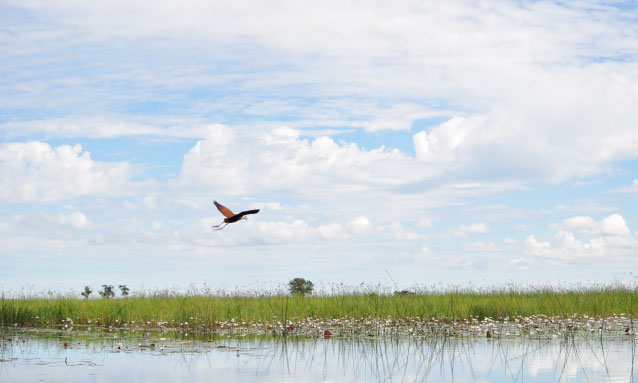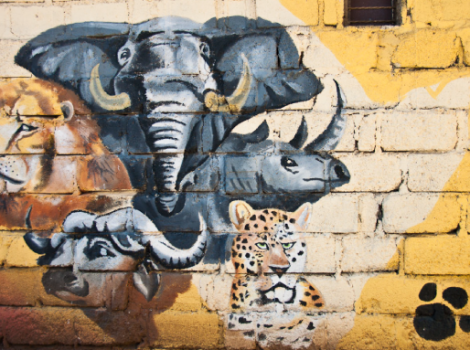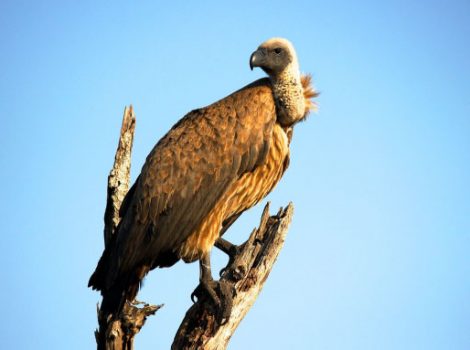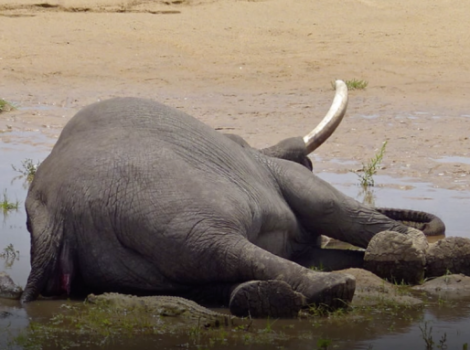
20 June 2023
When the lions left a kill, circling vultures converged.
When the elephants hid from the sun, the focus shifted to 12 species of larks to identify.
At sunset, owls materialised.
A birdwatcher’s binoculars have little down time in the African bush.
Our group of 11, with the help of two expert guides (and no help from me), recorded a whopping 310 bird species during a 22-day wildlife safari to several national parks and preserves in northern Botswana. For comparison, the Big Year record for the entire state of Washington is 376 species set by Will Brooks of Tacoma in 2021. Idaho’s Big Year record is 319 by Carter Strope of Boise in 2020.
Our gang had four wildlife professionals, including two PhDs in ornithology, another who did post-graduate work on spotted owls, and other birding hot shots who have checked off more birds on their life-lists than I have accumulated on my life-list of sins.
We’re talking big numbers.
Guides Johnny Ramsden and Pat Malatsi of Royale Wilderness (www.royalewilderness.com) injected birding into every moment when we weren’t locked in on leopards, giraffes, hippos and other leading safari attractions.
Indeed, sightings of flapping, squawking birds often tipped us off to prized sightings of, say, a python or black mamba hiding in a tree. It was a bit discomfiting to be embedded in the major leagues of birding while lacking the qualifications to even be their bat boy. Yet the enthusiasm of the feathers-first group was admirable and infectious.
Being a relative novice in “a gape of birders” (I made up that collective term, and it’s dead-on) allowed me to observe how tuned in they are to nature in a global way. The serious birders weren’t just interested in birds, but also eager to learn about the grasses birds inhabit, what types of trees on which they perch and which insects they eat. Their eyes locked-in on nanoscopic clues of color, movement or shape that gave away the location of an otherwise well-camouflaged bird in the distance.
Their ears perked up to detect species by their songs and calls.
As much as the gang and our guides already knew, they were constantly referring to field guides and iPads with birding apps for more information and verification.
They were keen on seeing apex predators such as leopards, but they were giddy one afternoon in the Okavango Delta after checking off the secretive Pel’s fishing owl. They boated an hour up the river specifically to find a lesser jacana, which has disproportionately long toes that allow it to stroll on lily pads and slightly submerged aquatic vegetation. Indeed, it was a religious experience. Since they appear to walk on water, jacanas are sometimes called “Jesus birds.”
One evening during our brief stay at Drotsky’s Cabins on the Okavango River, Malatsi, the guide, brought to happy hour his copy of the regional ornithological Bible, “Roberts Birds of Southern Africa.” After much discussion about the contents, he picked up the massive book, pressed it to his chest and gave all 1,296 pages a big hug.
“I won’t be truly happy until I know everything in this book,” Malatsi said.
To avoid being overwhelmed among such aficionados, I narrowed my scope. I focused on the gift of having three weeks to simply learn something new about birds every day. I wasn’t going to stress out with the unreasonable goal, for me, of knowing it all. Rather than check a bunch of species on a list, I set out to know something new about a fraction of the unfamiliar cast of birds I had travelled halfway around the planet to experience.
I started in the most basic way, bypassing the difficult-to-identify little brown birds and tuned in to the eye-catching species like the paradise fly catcher with its long rusty orange tail feathers. I would try to connect similarities between African birds and familiar species from home. For instance, the crowned lapwing ran and fed on the ground similar to our killdeer, and the kori bustard, Botswana’s national bird, is a ground roamer about the size of our wild turkey.
Then I started paying more attention to what distinguished individual species. For instance, Burchell’s sand grouse brings water to its brood after wading into waterholes and capturing droplets in its breast feathers. The blacksmith lapwing’s name is derived from its “tink, tink, tink’” alarm call, which sounds like a blacksmith’s hammer striking an anvil.
Red-billed quelea, Ramsden said, are the most abundant wild bird on earth. The sparrow-sized songbird, of the weaver family, congregates in huge numbers that can destroy crops. The “most photographed bird in southern Africa,” Ramsden said, is the lilac-breasted roller. This robin-size bird is colourful, common and tolerant of humans: the perfect subject for the fledgling bird photographer.



